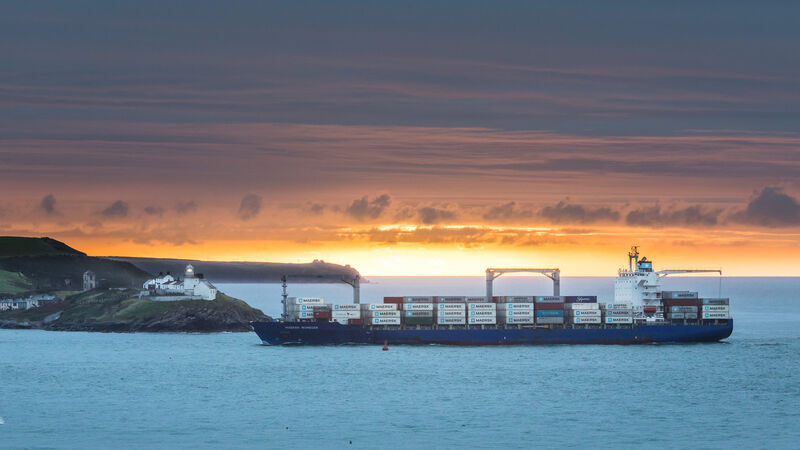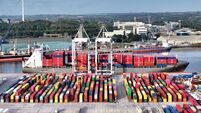John Whelan: It's small Irish firms that struggle most with sky-high shipping costs out of China

One of Europe’s largest shipping lines Maersk have had to ship vast quantities of empty containers to Asia to balance the trade demand.
Back with a bang, China’s Canton Fair, the biggest trade fair in the world, took place last week, amid signs that the second largest global economy was ready to bounce back after the Covid restrictions.
Shrugging off pandemic worries, 600,000 buyers from around the world, including Ireland, flocked to the Canton Fair, in Guangzhou, to place orders valued at more than €1.2tn (€1.03tn), according to state agencies.
That all adds up to continued port congestion, as the already over-stretched global shipping lines try to fulfil the order demands.
The biggest buyers of Chinese goods at the fair were once again US businesses, who despite trade sanctions, piled in orders for everything from Christmas toys, consumer electronics, golfing gear, and on to industrial equipment.
However, China is also the largest trading partner of more than 120 countries worldwide and the vast majority of countries had buyers at the fair.
The roots of the shipping crunch affecting all markets can be traced back to a chronic over-reliance on China as a manufacturing base for the global consumer and industrial products.
It appears that no lessons have been learned from the early days of the pandemic when it became clear that most of the masks and other medical personal protective equipment was made in China.
This was then followed by the US and Europe’s late emergence from the pandemic lockdown, while China recovering early had resumed its position as the supplier of first resort across the globe.
The imbalance of too many containers in Europe and the US, and not enough in China started at this point and has continued to dog global supply chains through 2021.
The dozens of cargo vessels stuck at anchor off the California coast provides a dramatic picture of the delivery disruptions which has created shortages of much needed consumer goods and necessary manufactured parts to keep industry ticking over in the US.
However, port congestion is also now a daily feature of trading in Europe and Asia. A trend that looks set to continue across the last quarter and into 2022.
“This situation is driven by a combination of rapidly increased demand and measures to fight the pandemic across ports and supply chains in general,” according to one of Europe’s largest shipping lines Maersk, which have had to ship vast quantities of empty containers to Asia to balance the trade demand. This has also pushed up costs.
Last month, the median cost of shipping a standard rectangular metal container from China to Europe hit a record, almost twice what it cost in July, which was twice what it cost in January, according to the Freightos index.
Essential freight-handling equipment too often is not where it’s needed, and when it is, there aren’t enough truckers or warehouse workers to operate it.
Today’s twisted supply chain is forcing companies to place precautionary orders to avoid running out of goods, which only compounds the pressure.
Consumers are confronting higher prices and shortages of toys, children’s shoes, and consumers electronics, as the Christmas season loons.
China’s October Golden Week, Christmas, and Chinese New Year will bolster strong demand for container shipping for the last quarter of 2021, adding to the port congestion, especially in the US and Europe.
Fallout from the health crisis is the chief culprit behind soaring freight bills and delivery delays.
Consumers, trapped at home slashed spending at restaurants, cinemas, and sporting events and splurged on goods such as laptops and bicycles, triggering an import avalanche that has overwhelmed freight channels.
But the pandemic also exposed weaknesses in global reliance on China for so many products.
Premium brands, such as Nestlé Nespresso coffee, have loyal customers, but the challenge for most companies is knowing how far they can raise prices before shoppers buy less or defect to cheaper brands.
The biggest companies can more easily absorb higher costs. And also can negotiate more attractive contracts in the first place, which means they can reliably get their goods across the ocean while smaller companies struggle.
- John Whelan is a leading Irish and international trade consultant












